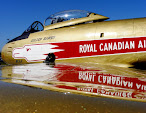In Affectionate Remembrance for Private William Broughton,
of Sydney, Cape Breton Canada.
https://www.youtube.com/watch?v=fEX9ppGTe_0
of Sydney, Cape Breton Canada.
https://www.youtube.com/watch?v=fEX9ppGTe_0
Who died at the 18th General Hospital, France, on the 6th day of September, 1916, from wounds received at the Battle of Courcelette part of the battle of the Somme, in the 21st year of his age.
Private William Broughton
Name: BROUGHTON, WILLIAMInitials: W
Nationality: CanadianRank: PrivateRegiment/Service: Canadian Infantry (Eastern Ontario Regiment)Unit Text: 2nd Bn.
Service No: 469665Age: 21Date of Death: 06/09/1916 - Due to Grenade wounds, while just going into the
line for the Battle of Courcelette and due to a pre-battle trench raid.
British Term for this small daily event was Trench Wastage.
Battle: Battle of Courcelette September 15th, 1916.
http://pages.interlog.com/~fatjack/somme.htm
Courcelette, Battle of. This was an episode in the fighting in the Somme valley in France in the summer and autumn of 1916. On September 15, the Canadian Corps attacked the German trenches before the village of Courcelette, and before nightfall the village had been captured by the 22nd battalion (French Canadians of Montreal) and the 25th (Nova Scotians). The operation was notable as the first occasion on which the Canadians acted in conjunction with the newly-invented tanks.
http://www.vac-acc.gc.ca/remembers/sub.cfm?source=Memorials/ww1mem/Courcelette
Private William Broughton
Name: BROUGHTON, WILLIAMInitials: W
Nationality: CanadianRank: PrivateRegiment/Service: Canadian Infantry (Eastern Ontario Regiment)Unit Text: 2nd Bn.
Service No: 469665Age: 21Date of Death: 06/09/1916 - Due to Grenade wounds, while just going into the
line for the Battle of Courcelette and due to a pre-battle trench raid.
British Term for this small daily event was Trench Wastage.
Battle: Battle of Courcelette September 15th, 1916.
http://pages.interlog.com/~fatjack/somme.htm
Courcelette, Battle of. This was an episode in the fighting in the Somme valley in France in the summer and autumn of 1916. On September 15, the Canadian Corps attacked the German trenches before the village of Courcelette, and before nightfall the village had been captured by the 22nd battalion (French Canadians of Montreal) and the 25th (Nova Scotians). The operation was notable as the first occasion on which the Canadians acted in conjunction with the newly-invented tanks.
http://www.vac-acc.gc.ca/remembers/sub.cfm?source=Memorials/ww1mem/Courcelette
Additional information: Son of Silvanus and Christena Broughton, of Sydney, Nova Scotia.
Casualty Type: Commonwealth War DeadGrave/Memorial Reference: X. B. 19A.Rests in Cemetery:
ETAPLES MILITARY CEMETERYCountry: France
Location Information:
Etaples is a town about 27 kilometres south of Boulogne.
The Military Cemetery is to the north of the town, on the west side of the road to Boulogne.
Historical Information: During the First World War, the area around Etaples was the scene of immense concentrations of Commonwealth reinforcement camps and hospitals. It was remote from attack, except from aircraft, and accessible by railway from both the northern or the southern battlefields. In 1917, 100,000 troops were camped among the sand dunes and the hospitals, which included eleven general, one stationary, four Red Cross hospitals and a convalescent depot, could deal with 22,000 wounded or sick. In September 1919, ten months after the Armistice, three hospitals and the Q.M.A.A.C. convalescent depot remained. The cemetery contains 10,773 Commonwealth burials of the First World War, the earliest dating from May 1915. 35 of these burials are unidentified.
http://www.cwgc.org/search/casualty_details.aspx?casualty=496986 http://www.cwgc.org/search/cemetery_details.aspx?cemetery=56500&mode=1
Canadian Book of Rememberance that is housed in Canada's Peace Tower http://www.vac-acc.gc.ca/remembers/sub.cfm?source=collections/books/bww1/ww1list3
Pte. William Broughton is # 48 down on the left side.
http://www.vac-acc.gc.ca/content/collections/books/bww1/ww1059.jpg
In Flanders Fields By:
Casualty Type: Commonwealth War DeadGrave/Memorial Reference: X. B. 19A.Rests in Cemetery:
ETAPLES MILITARY CEMETERYCountry: France
Location Information:
Etaples is a town about 27 kilometres south of Boulogne.
The Military Cemetery is to the north of the town, on the west side of the road to Boulogne.
Historical Information: During the First World War, the area around Etaples was the scene of immense concentrations of Commonwealth reinforcement camps and hospitals. It was remote from attack, except from aircraft, and accessible by railway from both the northern or the southern battlefields. In 1917, 100,000 troops were camped among the sand dunes and the hospitals, which included eleven general, one stationary, four Red Cross hospitals and a convalescent depot, could deal with 22,000 wounded or sick. In September 1919, ten months after the Armistice, three hospitals and the Q.M.A.A.C. convalescent depot remained. The cemetery contains 10,773 Commonwealth burials of the First World War, the earliest dating from May 1915. 35 of these burials are unidentified.
http://www.cwgc.org/search/casualty_details.aspx?casualty=496986 http://www.cwgc.org/search/cemetery_details.aspx?cemetery=56500&mode=1
Canadian Book of Rememberance that is housed in Canada's Peace Tower http://www.vac-acc.gc.ca/remembers/sub.cfm?source=collections/books/bww1/ww1list3
Pte. William Broughton is # 48 down on the left side.
http://www.vac-acc.gc.ca/content/collections/books/bww1/ww1059.jpg
In Flanders Fields By:
Lieutenant Colonel John McCrae, MD (1872-1918) Canadian Army
IN FLANDERS FIELDS the poppies blow
IN FLANDERS FIELDS the poppies blow
Between the crosses row on row,
That mark our place;
and in the sky The larks, still bravely singing, fly
Scarce heard amid the guns below.
We are the Dead.
Short days ago We lived, felt dawn, saw sunset glow,
Loved and were loved,
and now we lie In Flanders fields.
Take up our quarrel with the foe:
To you from failing hands we throw The torch;
be yours to hold it high.
If ye break faith with us who die
We shall not sleep, though poppies grow
In Flanders fields.
**********************
Posted in loving memory from William Broughton's great nephew,
Richard Abbenbroek...
https://www.youtube.com/watch?v=kqcSWOYUE-Q
At the going down of the sun
**********************
Posted in loving memory from William Broughton's great nephew,
Richard Abbenbroek...
https://www.youtube.com/watch?v=kqcSWOYUE-Q
At the going down of the sun
And in the morning
We will remember them...
May God give His grace to all!
Amen...
Amen...








No comments:
Post a Comment